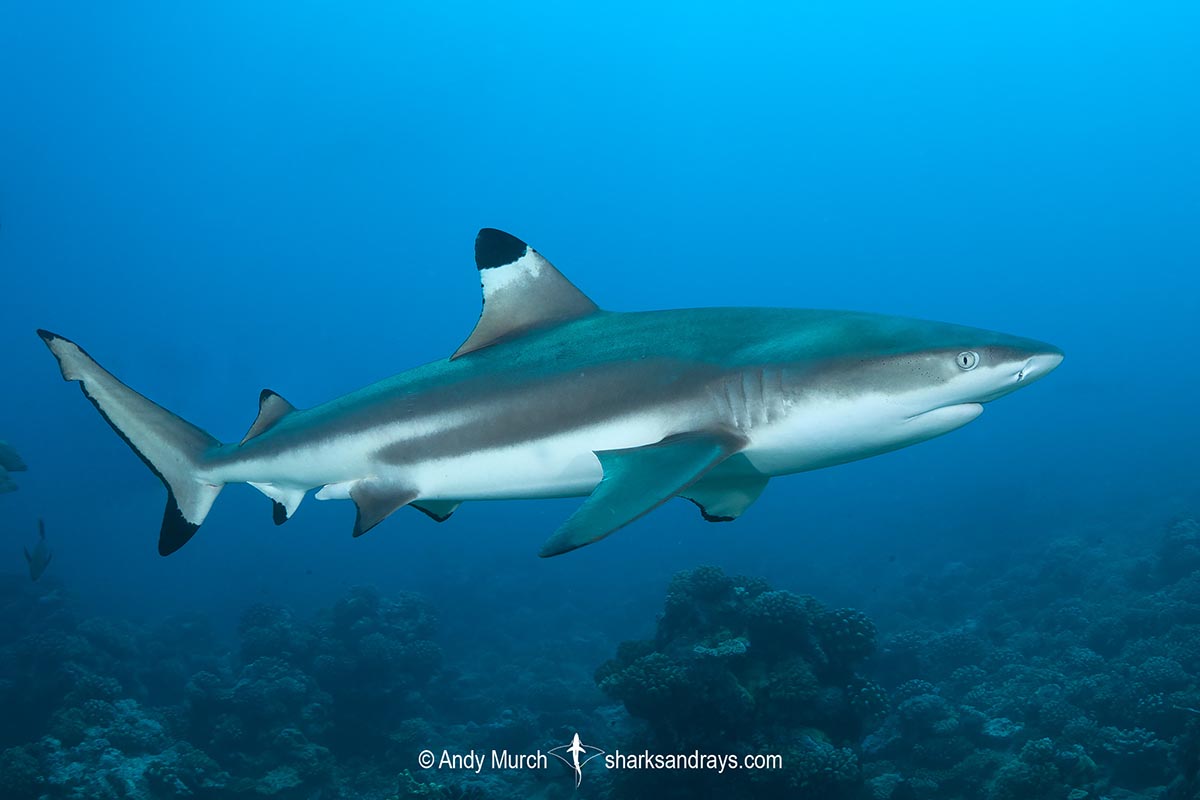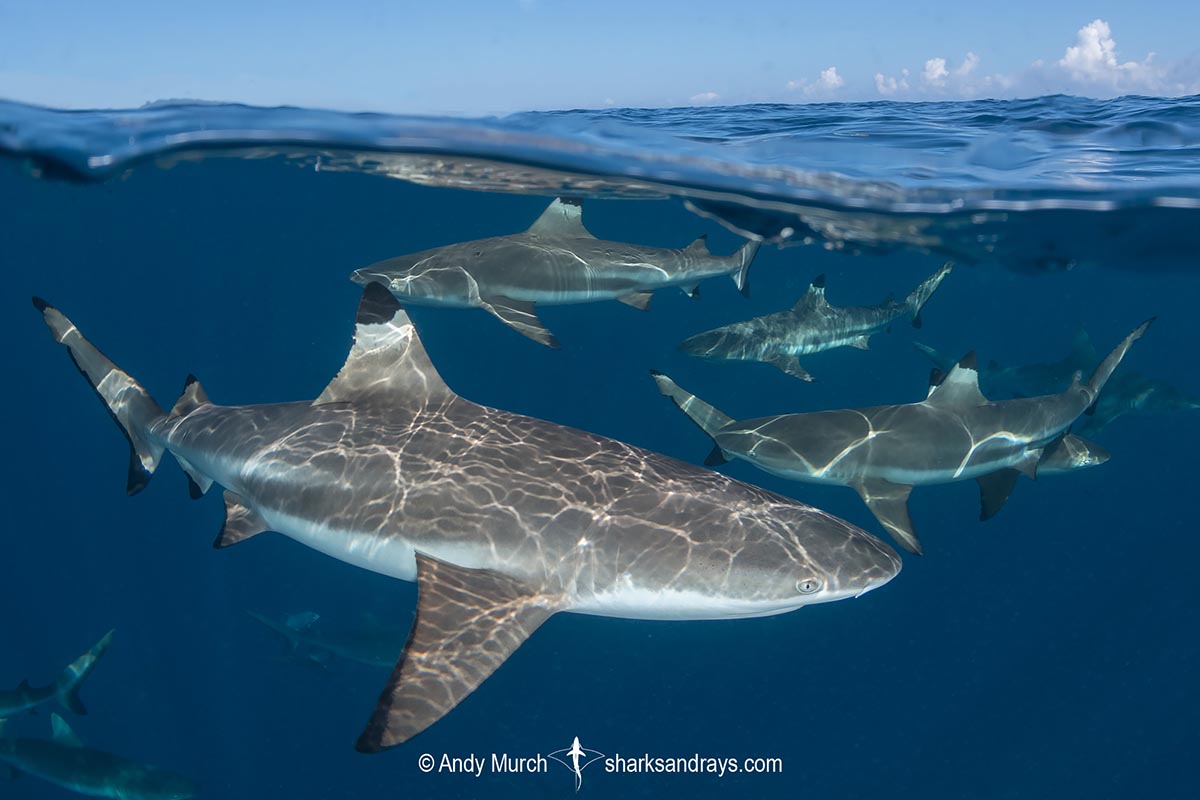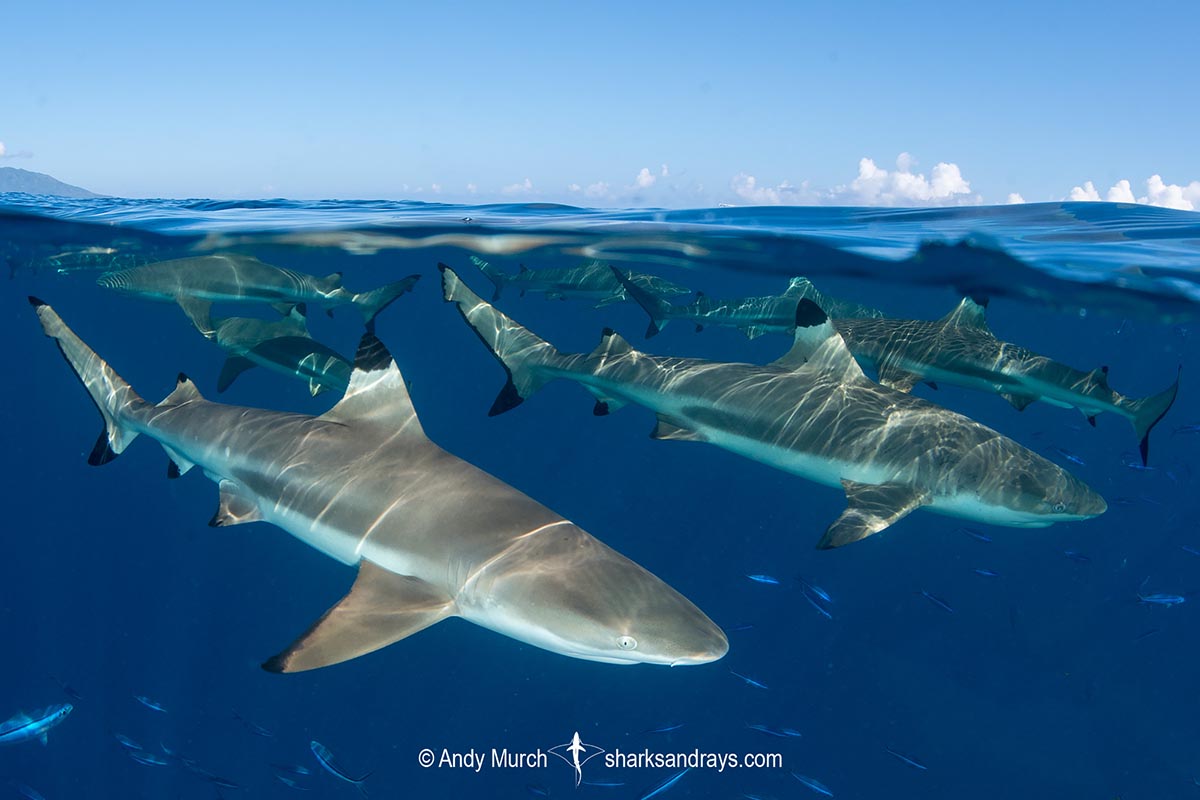Common name(s)
Blacktip Reef Shark, Blacktip Shark.
Binomial
Carcharhinus melanopterus
Synonyms
Carcharhinus melanoptures, Carcharhinus melanoterus, Carcharias commersoni, Carcharias elegans, Carcharias marianensis, Carcharias melanopterus, Carcharias playfairii, Carcharinus melanoptera, Carcharinus melanopterus, Hypoprion playfairi, Squalus carcharias minor, Squalus commersonii, Squalus ustus
Identification
A small but robust shark species. Snout short and rounded. First dorsal fin origin level with free rear tip of pectoral fin. Second dorsal origin level with anal fin origin. No interdorsal ridge. Dorsal coloration grey to grey-brown with a well defined pale band on flank. All fins have black tips and/or black posterior margins. Each black fin tip is vividly edged with white where it meets the rest of the fin.
Size
Maximum length 180cm. Size at birth 33-52cm.

Conservation Status
VULNERABLE
Blacktip reef sharks are caught in a variety of fisheries including longline, gillnet, handline and trawling. They are often retained and utilized for their fins, meat, skin, teeth, and liver. Habitat deterioration due to climate change, destructive fishing practices, and poor water quality all contribute to population decline in this species. The blacktip reef shark population has decreased by 30-49% in the last 44 years.

Habitat
Blacktip reef sharks inhabit shallow coral reefs, reef flats, and sandy bays adjacent to reefs. Occasionally, they are also found offshore over deep water, and in brackish estuaries. Depth 0-75m.
Distribution
The blacktip reef shark is found along most tropical coastlines from the western Indian Ocean to the Central Pacific. It is absent from the eastern Pacific and the Atlantic. It is now also present in the eastern Mediterranean Sea, having passed through the Suez Canal in sufficient numbers to establish a breeding population.
Reproduction
A viviparous species with yolk-sac placenta. 1-5 pups per litter. Gestation is approximately 10–11 months long in the Indian Ocean and Pacific islands. 7-9 months in Australia. Mating may occur annually or biannually, depending on location.
Mating and courtship among blacktip reef sharks has been observed in Tahiti (Johnson and Nelson 1978). The female swims in an exaggerated ‘S’ pattern, with her tail partially raised and head lowered. The male probably tracks her via a chemical signal. When he finds her, he adopts her swimming pattern with his head near her vent. Soon thereafter, the male bites the female on her flank behind her gills, and rolls her onto her side so that her head is against the bottom and her tail is raised. He then inserts one clasper. Copulation lasts for a few minutes.
Diet
Diet consists mostly of small, bony reef fishes, as well as small sharks and rays, cephalopods and crustaceans.
Behavior
The blacktip reef shark is an active, strong swimming species that patrols reef ledges and sand flats. It may be found alone or in small groups. It is non-migratory; having one of the smallest home ranges of any shark species (0.55 km2).
Reaction to divers
Sometimes shy but curious in areas where humans regularly swim or snorkel. Bold in baited situations, or when fishermen are tossing scraps overboard.
Diving logistics
Blacktip sharks can be encountered at literally thousands of shallow diving or snorkeling sites in the IndoPacific.
French Polynesia’s volcanic islands and coral atolls are some of the best spots where one can simply swim off the beach with mask and snorkel, with a realistic expectation of being approached by a blacktip reef shark or two.
At a spot known as The Swimming Pool in the shallows near the south pass of Fakarava, blacktip reefs feed on scraps tossed in by fishermen as they clean their daily catch. The sharks are so accustomed to the sound of food hitting the water, that if you slap your hand on the surface while snorkeling, the sharks will immediately swim up to investigate.
As of late 2019, shark feeds have been banned in French Polynesia but the blacktip reef sharks at White Valley, are still habituated to approaching boats and divers. As well as opportunities to see them on the reef, creating a disturbance next to the boat is a great way to encourage them closer for over/under shots
Fiji’s Beqa Lagoon is another guaranteed place to see blacktip reef sharks. The daily shark feed at Beqa Lagoon attracts up to eight species of sharks. The stars of the show are bull sharks but there are always BTS’s on the periphery and in the shallows nearby.
Similar species
Blacktip Shark Distinguished by much larger size, pointed snout, and lack of white margins on black fin tips.
Australian Blacktip Shark Virtually identical to the blacktip shark.








